Art World
What Do the French Truly Think About Jeff Koons’s Divisive Gift? We Camped Out by the Sculpture for Three Days to Find Out
One intrepid reporter braved the elements to find out the truth.
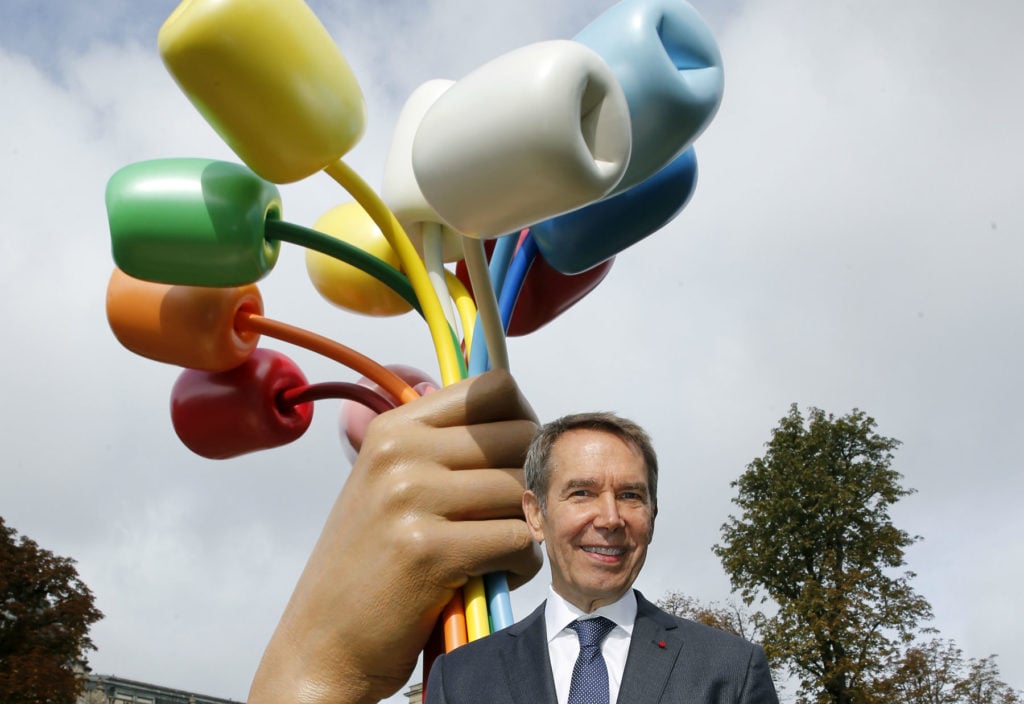
One intrepid reporter braved the elements to find out the truth.

Naomi Rea

Jeff Koons’s memorial sculpture, Bouquet of Tulips, was finally unveiled in Paris earlier this month after three years of ferocious debate among the French public.
The giant sculpture was originally commissioned in 2015 by the then US ambassador, Jane Hartley, as a memorial for Paris in the wake of a series of terror attacks across France. As a gesture of Franco-American friendship, the work is mean to evoke the Statue of Liberty, which was a gift to the US from France. Instead of Lady Liberty’s hand gripping a torch, however, Koons’s huge, hyper-realistic hand grips a bouquet of the artist’s signature balloon tulips.
When the gift was first announced, members of the French cultural establishment published an outraged letter in the French daily Libération, calling it a “cynical” act of “product placement.” The proposal for the sculpture was subjected to a barrage of complaints, taking issue with everything from the cost of production (though its $4 million cost ended up being raised privately) to its location (it ended up being moved) and the appropriateness of its shiny aesthetic.
Since its grand unveiling, the 41-foot-tall sculpture has been compared unfavorably to “eleven colored anuses mounted on stems” by the French philosopher Yves Michaud in the French publication L’Obs. A columnist for the New Yorker called into question the choice of “a pallid, disembodied hand” to memorialize the victims of a terror attack.
But what does the average French person really think? During FIAC week, I stationed myself next to the sculpture over three days and polled the locals for their thoughts. Surveying students and octogenarians, civil servants and cosmetics industry workers, here is what I discovered.
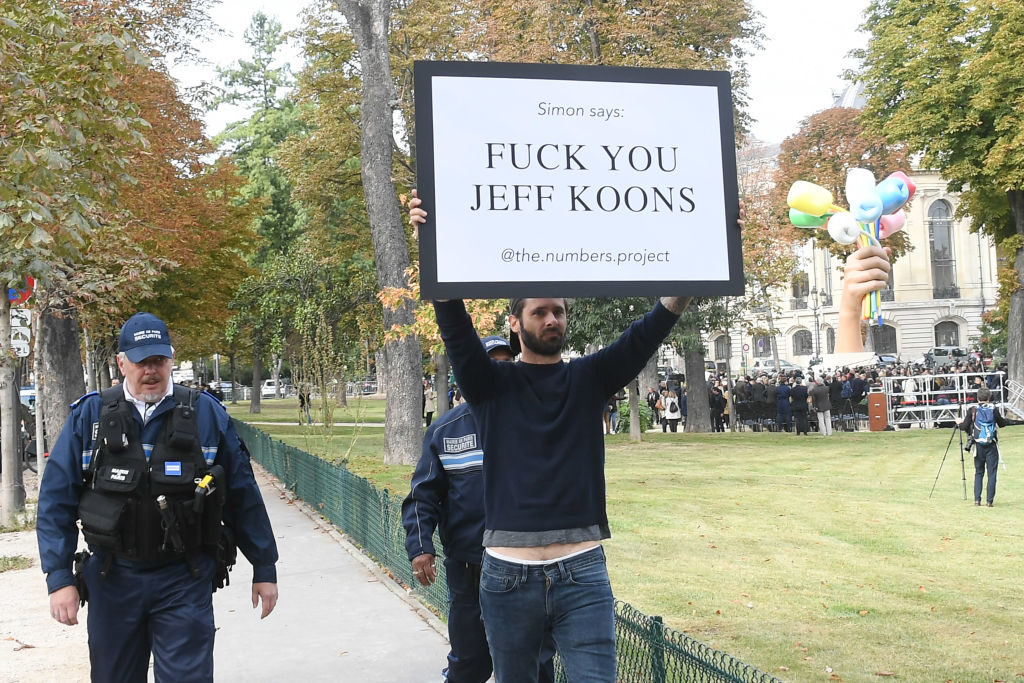
A Koons detractor protests at the inauguration of Jeff Koons’s Bouquet of Tulips in Paris. Photo by Stephane Cardinale – Corbis/Corbis via Getty Images.
Despite the intense controversy the work has generated on the French cultural scene, just over half of the 30 people I spoke to had a positive reaction to it. Eight people gave a neutral or mixed response. Just six echoed the vitriol for the sculpture that has been voiced in the press. While this is far from a scientific survey, I put that at a 53 percent approval rating in terms of my random sample.
Some people came just to Instagram the glossy public sculpture. Those who praised it called it “playful,” and “colorful,” and remarked on the “delightful madness” of its clash with the surrounding architecture.
“I know he was put in a difficult situation to justify the gesture; some people say he was doing it more for personal gain rather than it being a true gift,” Olivier Lerch, an employee of the ministry of culture—and Koons fan—told me. “But regardless of what you think, the ambiguity has put art center stage.”
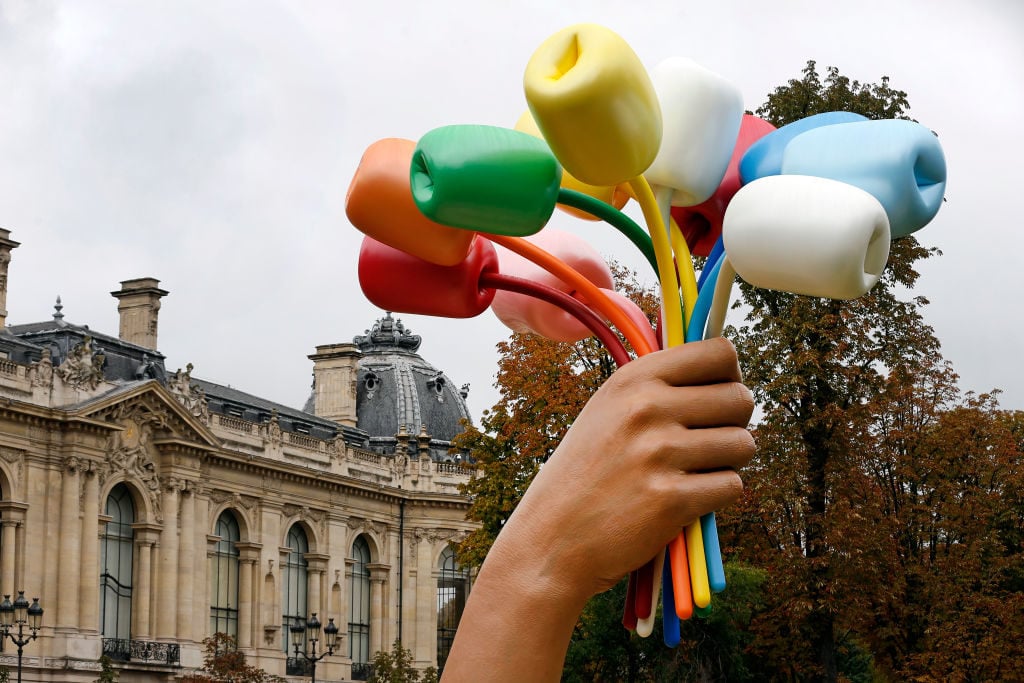
Jeff Koons, Bouquet of Tulips. Photo by Chesnot/Getty Images.
“I think the people who say they hate it are like the people who, in another time, came out strongly against the pyramid at the Louvre, or the Eiffel Tower,” says Guy Dewonck, a public works employee.
Several people echoed that sentiment. Indeed, when the Eiffel Tower was being built in 1887, a group of high-minded French aesthetes wrote a similarly scathing public letter opposing the “useless and monstrous” construction. I.M. Pei’s now iconic glass pyramid at the Louvre also prompted what came to be known as the Battle of the Pyramid, with critics calling it an eyesore.
Another respondent, Alberto Olivieri, also noted the polemic surrounding the flashy, experimental design for the Pompidou Center when it was first inaugurated. “Like these others, little by little, Parisians will get used to it,” he predicted. “It just takes time for an aura to develop around something.”
Several of the people I spoke to had made their way to see the work solely because of the flak it was receiving in the press. Among these was a pair of octogenarians, Jacqueline Duval and Nicole Leconte, who deemed the work “curious,” but complemented the artist on his knowledge of French culture: “Eleven tulips is good, as it is bad luck to offer an even number of flowers in a bouquet.”
But of course, not everyone was a fan.
“I find it truly vile,” Jean-Pierre Defaucigny, a collector and gallerist, said. “It is very, very, ugly. I can’t believe that France, which is overflowing with talented artists, would accept this. I am very sad. I won’t say what the flowers make me think of, but I find them indecent.”
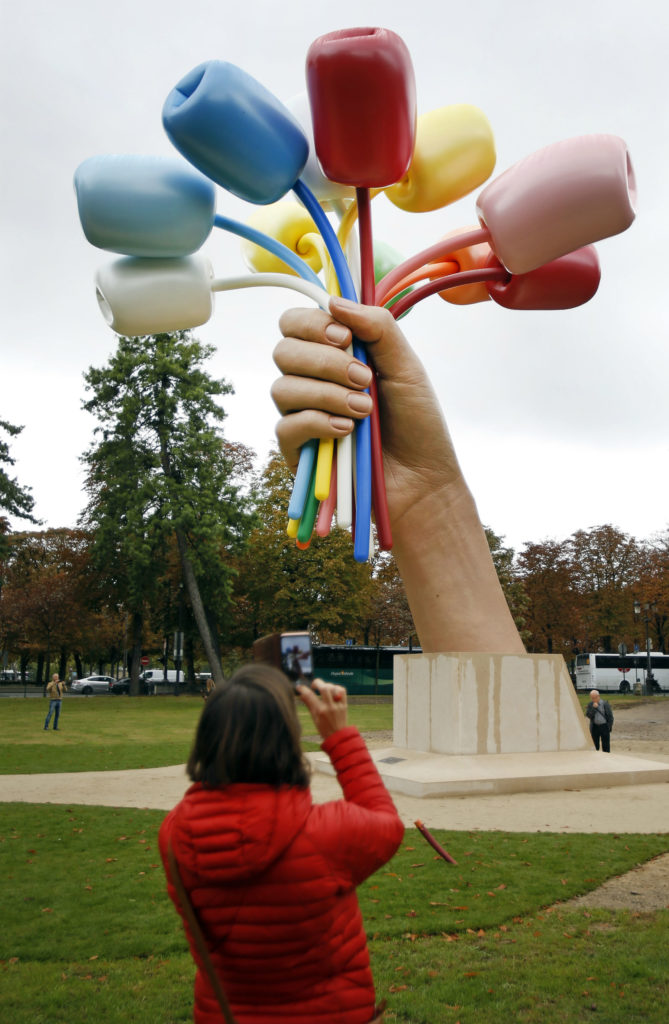
A visitor takes a picture of Bouquet of Tulips by Jeff Koons. Photo by Chesnot/Getty Images.
Others were less careful with their wording. “I don’t know why he chose to be so realist with the hand. It has a perverse element to it. Those stylized tulips, next to the realist textures of the skin, it conjures up the association of an anus,” one artist, who asked to remain unnamed, told me. “And Jeff Koons is an artist who thinks about everything. He’s commercial, but he thinks—it’s not an accident. So he’s giving us anuses, and that’s not really a gift. Everyone thinks it’s a bouquet of tulips, but I think it’s a bouquet of anuses.”
Indeed, the sculpture has already been colloquially dubbed a bouquet of “culipes,” a portmanteau that roughly translates to “ass-tulips.”
Even families are divided on the matter. One couple I spoke to, Isabelle and Jean-Luc Rimaud, were at odds. While Isabelle called it “kitsch, through and through,” her husband deemed it a “moving gesture” to a memorialize a serious event.
“I think the people who died deserve to be remembered, and with this thing, it’s hard to forget them,” he said. “Whatever you think of the aesthetic, it is still a strong gesture. In the years to come, what will we think? At least we will remember them when we pass by.” Some 131 people died in the November 2015 attacks.
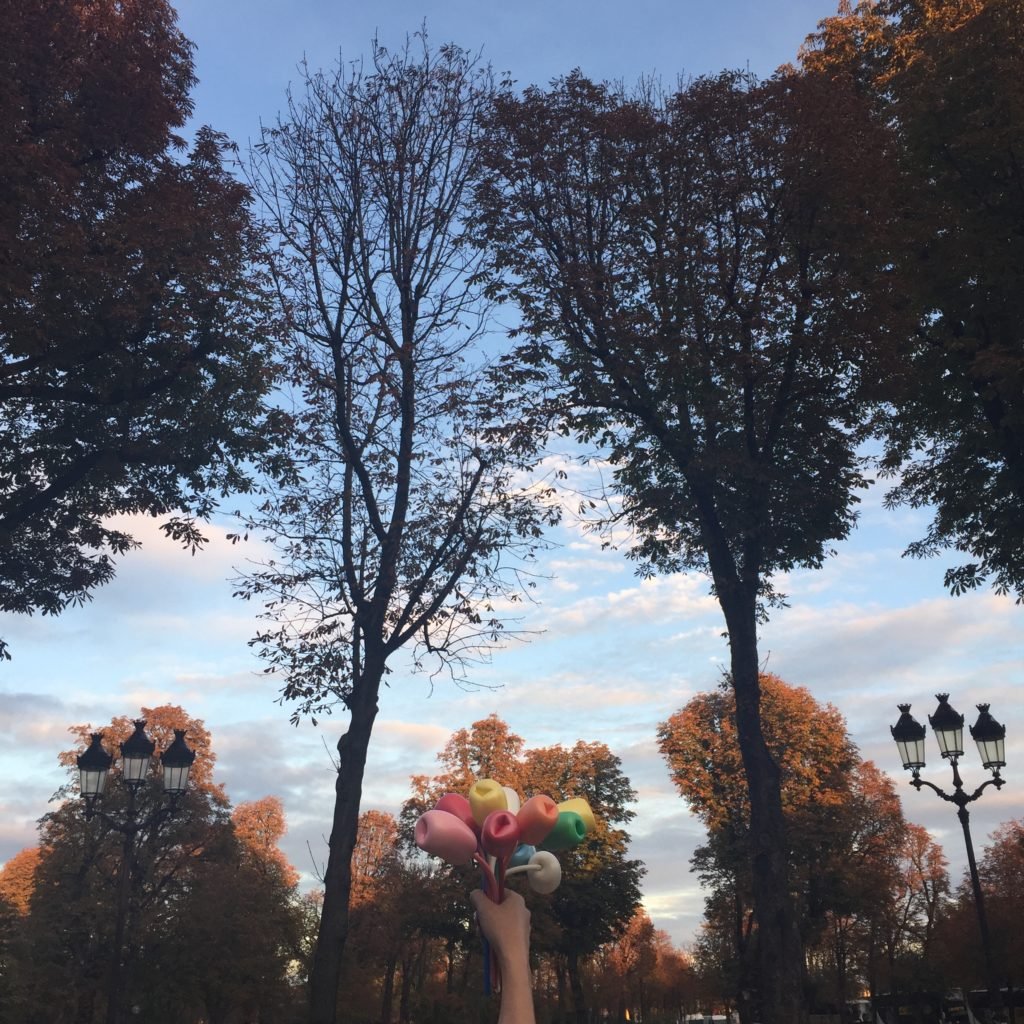
Jeff Koons’s Bouquet of Tulips. Photo by Naomi Rea.
A painter, Dominique Desme, compared the “marshmallow tulips” to an ad for Toys”R”Us, but conceded that “it was given in friendship,” which, he says, “is better than declaring war.” Another passerby, a cosmetology industry worker, Nell Zocly, said that it was moving to know the world is with the French in the wake of the tragedy.
Finally, however, it was a student, Arno Beringer, who offered some real talk. “Listen, I think it’s nice,” he said. “It was a present, after all. Lots of people are being really annoying about it, but that’s just a classic French reaction, isn’t it? People love to criticize stuff.”